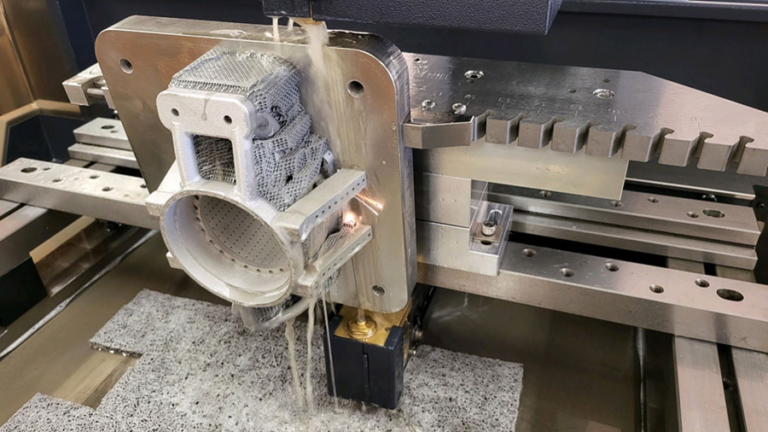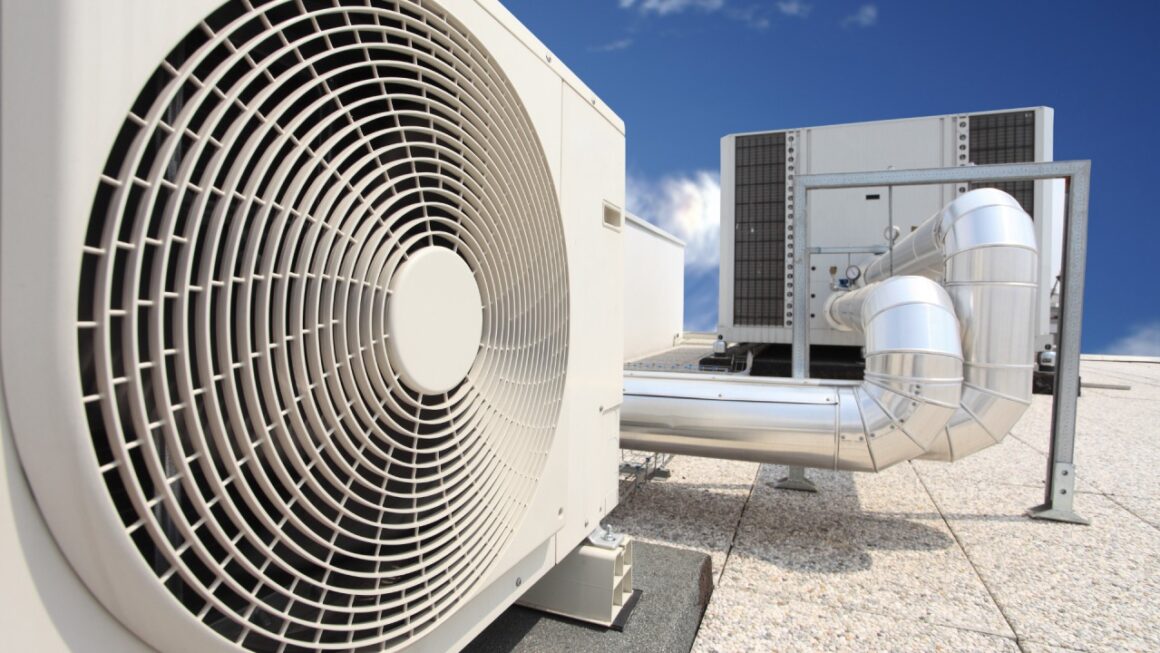
Wire EDM vs 3D printing
The Industry 4.0 era has introduced various technologies to cater to different needs and applications. Two of the most innovative and transformative methods are Wire Electrical Discharge Machining (Wire EDM) and 3D Printing. Each technology offers unique benefits and has its own set of limitations, making them suitable for different types of projects.
But how do they differ? Which one is more suitable for your project than the other? This article provides an in-depth comparison of Wire EDM vs 3D Printing. It will help you understand which suits your specific requirements better.
All About Wire EDM
Wire EDM (Electrical Discharge Machining) is a non-traditional machining process that uses electrical discharges (sparks) to cut conductive materials. A thin wire, typically made of brass, is continuously fed through the material to create intricate shapes and precise cuts. The process feeds a wire electrode under tension on a vertical axis. Discharge voltage is applied through the wire, crossing a dielectric liquid and striking the grounded workpiece.
Wire EDM process
The wire carries one side of the charge, while the conductive workpiece carries the other. When the wire and workpiece get close, a hot electric charge jumps the gap and melts tiny pieces of metal away. The electric spark acts as the cutting tool, shaping the material as desired. Additionally, the EDM wire process uses deionized water to control the process and flush away the tiny particles removed.
Pros
Some of the advantages of this process include:
- Precision: Wire EDM is known for its exceptional precision. It is capable of achieving tolerances as tight as ±0.0001 inches.
- Surface Finish: The process can produce excellent surface finishes, often eliminating the need for further finishing operations.
- Complex Geometries: It can create complex shapes and fine features that would be challenging or impossible with conventional machining.
- No Mechanical Stress: Since it is a non-contact process, no mechanical stress or deformation is imparted to the workpiece.
- Wide Range of Applications: It can process materials of any thickness and hardness as long as they are conductive. This includes thin plates and cemented carbide.
Cons
While wire EDM has many benefits, there are some downsides to keep in mind:
- Material Limitations: Only conductive materials can be machined using Wire EDM, limiting its application to certain materials.
- Slower Process: Compared to other machining methods, Wire EDM can be slower, especially for thicker materials.
- Cost: The equipment and operational costs can be relatively high. So, it less cost-effective for simple or high-volume parts.
- Wear and Tear: The wire itself wears out and needs to be replaced periodically. This may add to maintenance and operational costs.
- Cannot Process Horizontally: The vertically stretched wire cuts like a saw, so horizontal processing is not possible.
All About 3D Printing
3D printing is an additive manufacturing process of creating three-dimensional objects from a digital file by adding material layer by layer. This process builds an object by adding successive layers of material until the entire object is formed. Each layer is a thin cross-section of the final object. It allows for the production of complex shapes using less material than traditional manufacturing methods. Various methods of 3D printing exist, including Fused Deposition Modeling (FDM), Stereolithography (SLA), and Selective Laser Sintering (SLS). These methods use different materials, such as plastics, resins, and metals, to build objects.
3D printing process
Pros
Here are some benefits of using 3D printing for your projects:
- Design Flexibility: 3D printing allows for the creation of complex geometries and intricate designs that are difficult or impossible to achieve with traditional manufacturing methods.
- Rapid Prototyping: It enables quick production of prototypes for faster design iteration and development.
- Material Efficiency: Additive manufacturing typically produces less material waste than subtractive methods like machining.
- Cost-Effective for Low Volumes: It is cost-effective for producing low volumes of parts, especially custom or one-off items.
- Wide Range of Materials: Various materials can be used, from plastics and resins to metals and ceramics.
- Sustainability: The 3D printing process uses less material, reuses powders, and recycles most plastic supports.
Cons
Some of the drawbacks of this additive machining process include the following:
- Surface Finish and Accuracy: 3D printed parts often require post-processing to achieve the desired surface finish and accuracy.
- Material Limitations: While a wide range of materials is available, not all are suitable for 3D printing, and some materials may have limitations in terms of strength and durability.
- Build Size Constraints: The size of the 3D printer’s build chamber limits the size of the parts that can be printed.
- Speed: Large or highly detailed parts can take a long time to print.
- Initial Setup Cost: High-quality 3D printers and materials can be expensive, though the overall cost may be lower than traditional manufacturing for certain applications.
Main Differences Between Wire EDM and 3D Printing
To understand which technology might suit your needs, it’s important to examine the main differences between Wire EDM and 3D Printing. Here’s a look at how they compare:
Comparing wire EDM and 3D printing
Process Type
Wire EDM is a subtractive manufacturing process, meaning it removes material from a workpiece to create the desired shape. Thus, it is ideal for high-precision parts and intricate details in conductive materials. On the other hand, 3D Printing is an additive manufacturing process. It creates objects by adding material layer by layer, based on a digital model. It is great for creating complex shapes and reducing material waste.
Material Compatibility
Wire EDM can only cut conductive materials such as metals. 3D Printing offers a broader range of material options, including plastics, resins, metals, and ceramics. If your project involves non-conductive materials, 3D printing is the better choice. Wire EDM is more suitable for projects requiring high-precision cuts in hard metals.
Precision and Accuracy
Wire EDM is known for its exceptional precision. It is capable of achieving tolerances as tight as ±0.0001 inches. This makes it ideal for producing intricate and highly detailed components.
3D Printing generally offers good precision but varies depending on the printing technology used. FDM printers, for example, may have lower precision than SLA or SLS printers. Tolerances typically range from ±0.1 to ±0.3 mm, but higher-end machines can achieve better accuracy.
Surface Finish
Wire EDM produces excellent surface finishes, often eliminating the need for further finishing operations. The quality of the finish depends on factors like the type of wire used and the cutting parameters. However, the surface finish for 3D printing can vary significantly. Many 3D printed parts require post-processing such as sanding, polishing, or coating to achieve a smooth surface. The finish quality depends on the printer type and the material used.
Parts Complexity
Wire EDM can produce complex shapes and fine features, especially in hard materials. It creates intricate geometries that are difficult to achieve with traditional machining. 3D Printing creates highly complex geometries and intricate designs, including internal structures and overhangs that would be impossible with subtractive methods. Both technologies can handle complex parts, but 3D printing provides greater freedom in design. This allows for more innovative and intricate structures.
Production Speed
Wire EDM is generally slower, particularly for thicker materials. 3D Printing can produce parts relatively quickly, especially for prototypes. However, the speed depends on the part’s size, the design’s complexity, and the printing technology used. Large or highly detailed parts can take a long time to print.
Cost Efficiency
Wire EDM involves high initial equipment costs and operational expenses. It is more cost-effective for high-precision, low-volume production runs. Coversely, 3D printing has lower initial costs for low-volume production, making it cost-effective for custom parts and prototypes. Application
Wire EDM is best suited for high-precision parts, intricate shapes, and materials that are difficult to machine with traditional methods. It is commonly used in aerospace, medical, and tooling industries. On the other hand, 3D Printing ideal for rapid prototyping, custom parts, and complex designs across a wide range of industries including automotive, aerospace, healthcare, and consumer goods.
Here’s a summary table of the comparison:
| Feature | Wire EDM | 3D Printing |
| Process Type | Subtractive | Additive |
| Material Compatibility | Only conductive materials | Various materials (plastics, metals, etc.) |
| Precision | Extremely high | Moderate to high |
| Surface Finish | Excellent, often no post-processing needed | Often requires post-processing |
| Parts Complexity | High, especially for fine features | Very high, allows for complex geometries |
| Production Speed | Slower, especially for thick materials | Faster for prototypes, slower for large parts |
| Cost Efficiency | High initial and operational costs | Lower cost for low volumes |
| Application | High precision parts, intricate shapes | Prototyping, custom parts, complex designs |
Conclusion
Wire EDM and 3D Printing each have their unique advantages and are suited to different projects. Wire EDM is ideal for precision machining of conductive materials, making it perfect for industries requiring intricate and durable components. 3D Printing excels in creating complex geometries, rapid prototyping, and custom parts with various materials.
The choice between these technologies depends on your project’s requirements.Understanding each technology’s strengths and limitations will help you make an informed decision and ensure that you select the best method for your manufacturing needs.



